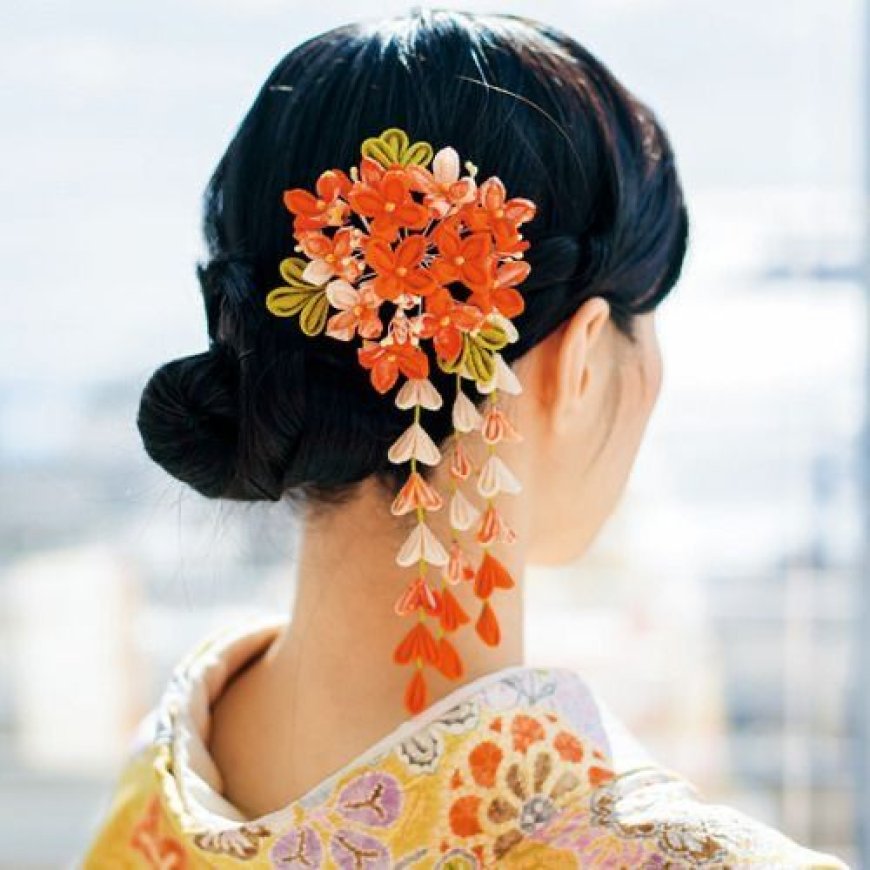Kanzashi - classic hairpin
Every Japanese woman, when wearing a traditional Kimono, must have indispensable accessories to show elegance and courtesy. One of them is the Kanzashi head brooch.

To some people, this is a hair brooch that is quite unfamiliar, but, along with the history of Kimono, Kanzashi is also an indispensable traditional symbol. In this article, let's take a closer look at the charms of these vintage brooches!
1. Kanzashi hair pins
Kanzashi was born more than 1,000 years ago, during the era of the Heian, when women started wearing buns instead of taregami - the long and straight hairstyle that was popular at the time. Kanzashi hair pins are also mentioned in poems and even the famous work - The Tale of Genji. But it can be said that the heyday and most development of this brooch was around the end of the Edo period, when bun hairstyles and many other sophisticated hairstyles were in vogue. Kanzashi are even so popular that shoguns are banned from using them because they can become a secret weapon that damages or kills people.
Initially, the structure of Kanzashi was quite simple, including a body length of 8 ~ 12cm and attached decorations such as pearl beads, colorful flowers, butterfly wings,... From the early days, Kanzashi was simple. Purely used for the purpose of fixing the bun, but gradually becoming an indispensable beauty accessory for women, highlighting or embellishing, increasing the highlight of each person. There are also people who believe that Kanzashi are not only used for beauty, but they are also believed to be important amulets for each person.
2. Types of Kanzashi
Over a thousand years of establishment and development, Kanzashi has also transformed and gradually perfected itself with a variety of designs and sizes. Let's take a look at some of the popular and popular styles and see what is the beauty behind them:
Tama Kanzashi: The simplest and most popular style in the Edo and Meiji periods, used mainly for bridal hairpins, oval buns or for married women. The structure of the brooch includes only the body (can be one or two stems), attached with round, small and colorful pearls.
Kanoko Dome:
The predecessor of this brooch was made in the Edo period, about 12cm long and made of silver, decorated with traditional fans. Today, the main feature of Edo Kanzashi is still retained, which is the shape of hand-held fans, but created in many different materials and shapes and sizes. The most common is the two-legged brooch, with fans attached at the top, attached with pearls and usually made of lacquer and in deep tones. This type of brooch is usually reserved for mothers and grandmothers because it is often used in formal occasions.
Kushi Kanzashi:
Shaped like the hairbrushes used by young girls in the past, ancient Kushi Kanzashi were mainly made of tortoise shell or wood with decorative patterns and motifs on the arc shape of the brooch. Today, Kushi Kanzashi is mainly made of lacquer with white, black and red colors being the most prominent, dotted with delicate gilded flowers.
Bira-bira Kanzashi:
Mainly used for Japanese girls in ancient times, so Bira-bira has a rather feminine and graceful shape. Because they are often attached with long motifs and are even made of metal or attached with small bells to emit fluttering sounds in the wind. Today, they are designed with more unique designs and sizes and colors and are often used with colorful, youthful Kimono sets.
Ogi Kanzashi:
The brooch is called a princess style, usually made of metal with the shape of a fan, which can emit sounds while moving.

























































































